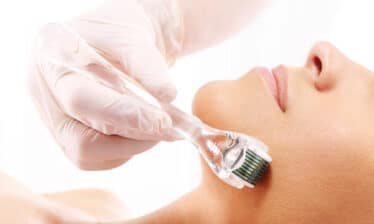The skin is the largest organ of the body, and good skin health is vital for overall health.1 Itchiness can be a sign of something simple like a rash or dry skin, or it may be a warning bell for skin cancer. Read on to learn everything you need to know about what skin cancer types and symptoms to watch out for and more.
Does Skin Cancer Itch or Tingle?
Your skin may be itchy due to a variety of reasons, like weather changes (especially in cold or dry climates), insect bites, rashes or allergies, and eczema or dermatitis. However, in certain cases, itchiness or tingling sensations may very well be a sign of cancer.2
This happens because cancers often occur when the body is in a state of chronic inflammation. Inflammatory processes cause the body to release certain chemicals, which can cause itchiness. Some cancers may even spread to the nerves, resulting in usual sensations like tingling.3
But this shouldn’t be considered a hard and fast rule as not all cancers are itchy or tingly. Similarly, all itchiness or tingling sensations are not harbingers of cancer.4
What Symptoms Should You Look Out For?
Generalized itchiness or pruritus may not always be a cause for concern. However, itchy or tingly skin can be a warning sign of skin cancer when accompanied by other symptoms, such as:5
- A new mole or changes in an existing mole like discoloration, pigmentation, or sudden growth
- A new sore or wound that bleeds, oozes, or forms crusts but doesn’t heal
- A scaly, rough, or inflamed patch of skin
- A pink or pearly bump that bleeds easily
- A new or unusual skin lesion or growth
- New-onset pain radiating away from the itchy or tingly spot
- Red spots (with or without rings) on your skin
- Scar-like or wart-like growths with poorly defined edges
How to Differentiate Between Skin Cancers?
Here’s a brief overview of how to identify the most common types of skin cancer lesions:6
- Melanomas: These lesions appear as new or existing moles or warts with changes in size, color, and appearance. As they evolve, they become painful and itchy and exhibit symmetric borders.
- Basal cell carcinomas: They present as pearly or pink areas of skin with ulcers that ooze or bleed. These lesions are usually red or fleshy looking.
- Squamous cell carcinomas: They present as painful and itchy lesions, along with open sores (or ulcers) and bleeding.
Most skin cancers are usually noticed by the people themselves or their families. Therefore, it’s critical to regularly examine yourself in a mirror, especially the covered and hidden areas like skin folds. You can also take preventive measures like limiting sun exposure, avoiding indoor tanning, using appropriate skin care, and minimizing exposure to radiation and certain viruses.7
Final Thoughts
While skin cancer is more serious than you think, it’s easily curable when caught early. This post aims to help you gain a better understanding of skin cancer symptoms so that you can be vigilant and receive timely treatment.
Check out My Skin Treatment today for more interesting information on skin conditions and other useful skin-related tips.
SOURCES:
- Cleveland Clinic: “Can Skin Cancer Make You Itch?”
- Cleveland Clinic: “Can Skin Cancer Make You Itch?”
- Cleveland Clinic: “Can Skin Cancer Make You Itch?”
- Moffitt Cancer Center: “Is Skin Cancer Itchy?”
- Moffitt Cancer Center: “Is Skin Cancer Itchy?”
- Cleveland Clinic: “Can Skin Cancer Make You Itch?”
- ASCO: “Skin Cancer (Non-Melanoma): Screening.”






